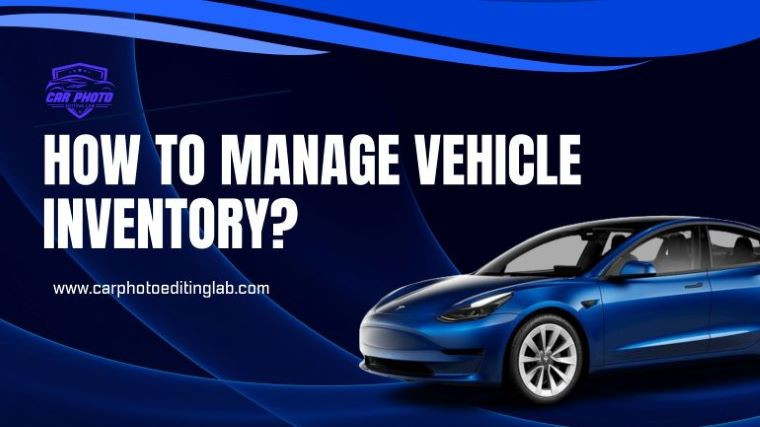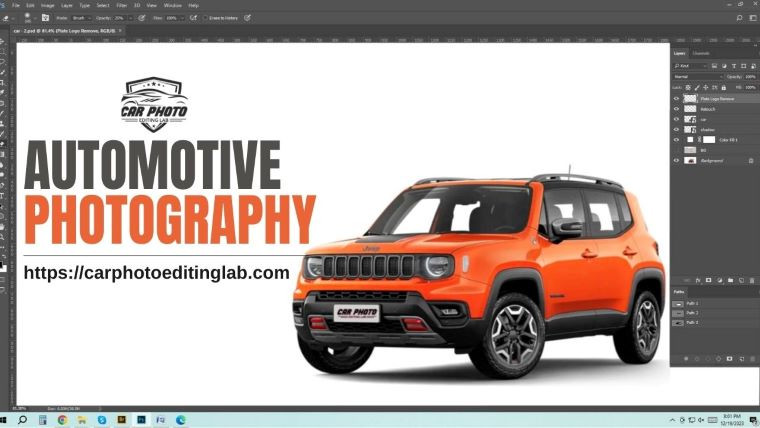-
Contact us with Whatsapp:
+8801734997063 -
Mail Us:
[email protected] -
Service Hours
24/7
How to Manage Vehicle Inventory?

Mar 2024
- 04 Mar 2024
- Business Solution
- 0 Views
How to Manage Vehicle Inventory?
Effective vehicle inventory management is crucial for automotive dealerships to optimize sales performance and profitability. Managing a diverse range of vehicles requires careful planning, organization, and strategic decision-making. From sourcing and purchasing vehicles to marketing and sales, every aspect of inventory management plays a significant role in dealership success. By implementing robust inventory management practices, dealerships can streamline operations, minimize holding costs, and ensure an optimal mix of vehicles to meet customer demand. This guide provides essential strategies for managing vehicle inventory effectively, including inventory software implementation, purchasing optimization, pricing strategies, marketing techniques, and performance evaluation. With a comprehensive approach to inventory management, dealerships can enhance customer satisfaction, drive sales, and maintain a competitive edge in the automotive retail industry.
Establish Clear Inventory Goals
Before diving into managing vehicle inventory, it's crucial to establish clear and achievable goals. These goals will guide your inventory management strategies and help you stay focused on your dealership's objectives. Your inventory goals may include maintaining a certain turnover rate, minimizing holding costs, maximizing profitability, or ensuring a diverse selection of vehicles to meet customer needs. By defining these goals upfront, you can align your inventory management efforts with your overall business objectives and measure your success accordingly.
Implement Inventory Management Software
Investing in inventory management software is essential for streamlining processes and maintaining accurate inventory records. Inventory management software allows you to track vehicle availability, monitor sales trends, automate reordering, and generate detailed reports for analysis. With the right software in place, you can efficiently manage your inventory, identify areas for improvement, and make informed decisions to optimize your dealership's performance. Additionally, many inventory management systems integrate with other dealership software, such as customer relationship management (CRM) and accounting systems, streamlining communication and improving overall efficiency.
Organize Inventory
Proper organization of your vehicle inventory is crucial for efficient operations and customer satisfaction. Arrange vehicles in a logical and accessible manner within your lot or showroom, making it easy for both staff and customers to navigate. Consider categorizing vehicles based on factors such as make, model, year, price range, and features. Clear signage and labeling can also help customers quickly find the vehicles they're interested in. By organizing your inventory effectively, you can create a positive experience for customers and improve the efficiency of your sales process.
Regular Inventory Audits
Regular inventory audits are essential for maintaining the accuracy of your inventory records and identifying any discrepancies or issues. Conduct physical counts of your inventory on a regular basis, comparing them to your records in the inventory management system. This helps ensure that all vehicles are accounted for and reduces the risk of stockouts or overstock situations. Additionally, inventory audits allow you to identify slow-moving or obsolete inventory that may need to be discounted or otherwise addressed to free up space and capital.
Optimize Purchasing
Optimizing your purchasing practices is crucial for maintaining a healthy inventory and maximizing profitability. Use historical sales data, market trends, and customer feedback to inform your purchasing decisions. Focus on stocking vehicles that are in high demand and align with your target market preferences. Negotiate favorable terms with suppliers, such as volume discounts or flexible payment terms, to reduce purchasing costs. Additionally, consider diversifying your inventory to appeal to a wider range of customers while minimizing the risk of over-reliance on any particular vehicle type or brand.
Monitor Vehicle Aging
One of the critical aspects of managing vehicle inventory is monitoring vehicle aging. Vehicles that remain in inventory for extended periods can incur additional holding costs and lose value over time. By tracking the age of each vehicle in inventory, dealerships can identify aging stock and implement strategies to sell them promptly. This may include offering discounts, promotions, or targeted marketing campaigns to attract buyers' attention and move aging inventory off the lot. Additionally, dealerships can prioritize selling older inventory to free up space for newer, more desirable vehicles and maintain a fresh inventory mix.
Manage Holding Cost
Holding costs associated with vehicle inventory can significantly impact a dealership's profitability. These costs include expenses such as storage, depreciation, financing, insurance, and maintenance. To manage holding costs effectively, dealerships should implement strategies to minimize the time vehicles spend in inventory and optimize inventory turnover rates. This may involve negotiating favorable financing terms, optimizing storage space, reducing insurance premiums, and implementing efficient maintenance practices. By controlling holding costs, dealerships can maximize their profit margins and allocate resources more effectively.
Implement Pricing Strategies
Pricing vehicles appropriately is crucial for attracting buyers and maximizing profitability. Dealerships should consider various factors when determining pricing strategies, including market demand, vehicle condition, depreciation rates, competitor pricing, and customer preferences. Pricing vehicles competitively while still maintaining a healthy profit margin is essential for driving sales and maintaining a competitive edge. Additionally, dealerships may employ dynamic pricing strategies that adjust prices based on market conditions, sales trends, and inventory levels. By implementing effective pricing strategies, dealerships can maximize revenue and minimize the risk of overpricing or underpricing inventory.
Market Inventory Effectively
Effective marketing is essential for reaching potential buyers and generating interest in vehicle inventory. Dealerships should leverage various marketing channels, both online and offline, to showcase their inventory to a wide audience. This includes creating engaging listings on dealership websites, third-party automotive marketplaces, and social media platforms. Additionally, dealerships can use targeted advertising campaigns, email marketing, and promotional events to attract buyers' attention and drive traffic to their lot or showroom. By effectively marketing their inventory, dealerships can increase visibility, generate leads, and ultimately, boost sales.
Provide Comprehensive Vehicle Information
Transparency and detailed information are essential for building trust with potential buyers and facilitating informed purchasing decisions. Dealerships should provide comprehensive vehicle information, including specifications, features, mileage, condition reports, and pricing details, for each vehicle in inventory. This information should be easily accessible to customers through online listings, vehicle descriptions, and sales consultations. Additionally, dealerships can use multimedia tools such as photos, videos, and virtual tours to provide a more immersive experience for buyers. By providing comprehensive vehicle information, dealerships can enhance customer satisfaction, reduce inquiries, and increase the likelihood of successful sales transactions.
In conclusion, managing vehicle inventory effectively requires strategic planning, meticulous organization, and continuous adaptation to market dynamics. By establishing clear goals, utilizing inventory management software, and optimizing purchasing and pricing strategies, dealerships can streamline operations and maximize profitability. Additionally, prioritizing marketing efforts, monitoring vehicle aging, and providing comprehensive vehicle information are crucial for attracting buyers and facilitating informed purchasing decisions. With a proactive approach to inventory management and a commitment to customer satisfaction, dealerships can maintain a competitive edge and achieve long-term success in the automotive retail industry.
























1 Comment
Davis
28 May, 2025 12:02 PMYou made your stand very well.. casino en ligne francais Awesome knowledge, Cheers. casino en ligne francais Nicely put. Thanks a lot! casino en ligne francais You have made your point extremely effectively!! casino en ligne You actually mentioned this terrifically. casino en ligne This is nicely put! ! casino en ligne You made the point. meilleur casino en ligne Cheers, I like it! casino en ligne France Awesome stuff Appreciate it. casino en ligne Whoa many of awesome material. casino en ligne francais